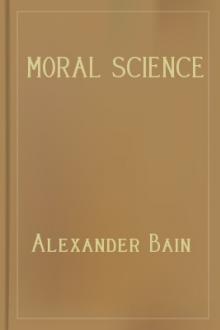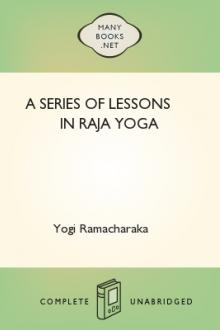Man's Fate and God's Choice, Bhimeswara Challa [best free ereader .TXT] 📗

- Author: Bhimeswara Challa
Book online «Man's Fate and God's Choice, Bhimeswara Challa [best free ereader .TXT] 📗». Author Bhimeswara Challa
The present age, the Kali Yuga in the Hindu cycle of eternal time, foretold as the most adharmic or immoral of all, has a silver lining. Because evil will be so pervasive and entrenched, the standards of ‘being moral’ also come down considerably, so that with minimum effort in the right direction, one can attain the same results as those that required
Herculean effort in the earlier yugas. That which was achieved through contemplation in the Satya Yuga, through sacrifices in the Treta Yuga, and through worship of God in the Dvapara Yuga, may be attained through kirtana or loud chanting of God’s name in this Kali Yuga or the Iron Age. In our sinful age, even a sincere desire to do good is good enough; just not doing harm can be deemed as virtuous. All of our desires and deeds are conditioned by the external world, which is not an ideal world. However romantic and idyllic it might be, we cannot exchange yugas or our lives with those of our ancestors. The nature and entitlements of every life are specific, and even the same person, if he were to relive in another yuga, cannot act the same. There is a story in the Mahabharata: When Bhima, one of the five ‘righteous’ Pandavas, the son of god Vayu (wind), meets Hanuman (also a son of Vayu, and who is the great so-called ‘monkey-god’ of another epic, Ramayana), Bhima asks his ‘elder brother’ to show him the gigantic form that he [Hanuman] had assumed in the Ramayana, while crossing the ocean in search of Sita, the abducted wife of Rama. Hanuman chuckles and says, ‘that was in another yuga, and even I cannot recreate it…’
Chapter 4
The Sacred, the Secular, and the Profane
The three strands
To make some sense of his present malaise, and to find a way out of the labyrinths of life, to retain some sense of sanity in an increasingly inscrutable world, man searches for symbols and signposts, crutches and coordinates, searchlights and lodestars. However much we might demur and deny, none of us are truly comfortable with who we think we are or have become, and we are desperate to define ourselves in a better light. At the same time, and much as we may quibble and cavil at the world around us, we also know deep within that the world is but our own visible shadow, the external projection of the world within. This angst, this seeking, invariably draws us into the domain of the three strands — the sacred, the secular, and the profane — that drive the human thought. We tend to think that if we can manage to put a tag on an event or happening as one of those three then it would make our lives easier. We want to venerate the sacred, embrace the secular, and shun the profane. But such clarity eludes the human mind. The human mind has always instinctively viewed the sacred and profane or the holy and the desecrated as belonging to two distinct classes, as two worlds between which there can be nothing in common. Although, everything is God’s creation or His representation, or so we like to say, the mental divide between the sacred and the sacrilegious, or the holy and the unholy, permeates every walk and circumstance in life. And that mental divide has led man to ‘assign’ sacredness to things around him: sacred space, sacred time, sacred name, sacred Nature, sacred texts, sacred ideals, sacred words, sacred music, sacred art, and sacred place. As a theological concept, Rudolf Otto (The Idea of the Holy, 1917) defined ‘holy’ as something that is ‘non-rational, non-sensory experience or feeling whose primary and immediate object is outside the self’. The ‘sacred’ is strewn all over, in every walk of life. The place of worship is a sacred space, and in many cultures, certain times are deemed holy or auspicious (for example, the concept of muhurta in Hinduism). Religious festivals are ritualized sacred events of mythical origins, and participating in them means stepping out of the ordinary time into a sacred time. There is even a holy hour of death in many religions. Truly religious or spiritual teachers and exponents are called holy, and their very proximity is deemed a blessing. The utterance or chanting of some words, like the mantras in Hinduism, or even the sounds of these words, it is believed, carry the power of a miracle. At a practical level, almost everyone has certain things ‘sacred’ or ‘sacrosanct’, which are not necessarily holy; which are so fundamental that they are non-negotiable; the expression ‘sacred cow’ [for the Hindus] symbolizes that spirit. Being ‘secular’ is a badge of being ‘modern’. Broadly, it means not being overly or ostentatiously religious, but being tolerant to other faiths, and being prepared to share equal public space with all religions. Being ‘secular’ is sometimes used as a symbol of not being superstitious, and having a scientific temper. It is often applied to the institution of the State, in the sense that the instruments of the State do not support or promote any particular religion and of governance not being theocratic. And although we do not speak much about the word ‘profane’ except as an expression of vulgar language — as in ‘profanity’ — its place in human consciousness is no less native.
Something that is profane, then, would literally mean ‘against the temple’ or even ‘far from the temple’, where ‘temple’ refers to the method of worship, not to a structure or a building. In fact, the very origin of the word ‘profane’ is from its Latin ‘in front of the temple’
or ‘outside the temple’, referring to entities and structures not belonging to the Church. Though we view the sacred, the secular, and the profane as antithetical forces flowing from the way we practice religion or apply science and technology, the truth is that all three are independently intrinsic to human nature. Then we have something we pejoratively call ‘superstition’, thrown on the way. For some, sacred itself is superstition, and for some others, superstition is that which they do not like and others believe in. Just as a mirror reflects only what is in front of it, and just as we cannot throw up what is not already inside us, so it is with our actions and our thoughts, the feelings and emotions within. We cannot assume that the sacred is something endogenous and that the profane is exogenous; or that being secular is innate in our culture. Or dismiss as ‘superstition’ something that we cannot ‘prove’ or we cannot find ‘evidence’ for. All three — the sacred, the secular, and the profane — constantly crisscross and crosswalk in our consciousness, and we, being unable to harmonize them, create artificial walls at the most superficial level, which manifest in a variety of ways in our behavior. The ‘balance of the blend of these three strands’ shapes our psychic personality, defines our reflexive responses to life’s vicissitudes. It is an important input to human transformation.
Somewhat simplistically, we think that what is not sacred must be secular, and what is not vulgar or profane must be holy, and what science cannot corroborate must be superstition. We view secular as something that is sacred sans superstition and practical without profanity. Just as there is profanity in the symbol of the sacred — religious behavior — there could be the sacred in the synonym for the vulgar — sex. That which incites hatred cannot be sacred and that which creates life, of the saint and the sinner alike, cannot be profane by itself.
Indeed, in the contemporary world, more profanity oozes out of religious zealotry than perhaps from any other single source, but, the faithful zealots themselves think they are doing their ‘sacred’ duty in committing those horrors. Few people in India would see anything profane in the dumping of human waste or religious refuse (or even toxic industrial effluent) into the ‘sacred’ River Ganges, which they literally worship as a goddess. It does seem that in the womb of the sacred lies the ‘savage’, and that with the halo of the holy around us there is no depth below which the human will not sink. The shield of the mind fired by the sacred is impervious to any sense of guilt. The ‘sacred’ as a concept is associated with mystical awe or rapture, the veneration of something larger than what the mind can live with. The secular is what the mind can confine and confide in confidence. Even space and time are divided into the sacred and the secular. A place of worship is sacred, and a place of gambling or prostitution is profane. Situations arise where the Sacred and the Profane go hand in hand, one more apparent duality that frames — and festers — our life, constantly challenging us to choose or to harmonize. For many Hindus, certain times of the day like the hours before the dawn (Brahma muhurta) are considered sacred, and certain other time periods in a day (Rahukala) are considered inauspicious. The same act performed at different times of the day is believed to yield different results, underscoring the idea that nothing in creation, space, and time is equal. In the Old Testament, God tells Moses not to come any closer and to remove his sandals as he is standing on the holy ground. For the best part of man’s earthly existence, it was the sacred, the holy, the spiritual, the sublime, and the supernatural that were dominant in his life. Even though we tend to scoff, they played an important emotional part in seeing us through torrid times — and they still do for the believer as well as the rationalist.
At the most basic level, everything that a human does today is heavily influenced by three strands of knowledge that are embodied by and embedded in what we call religion, science and technology. At the practical level, the questions that confront us are: who is a truly religious person? who is a genuinely spiritual person? and, what is a scientific state of mind? The human consciousness harbors a bewildering array of thoughts, passions, prejudices, feelings, and emotions, and how they collide or combine and emerge through
behavior has been an enduring enigma. These thoughts or rather the way they are applied, give shape to our behavior and cast their shadow on how we act and react in everyday life. Since all three — religion, science and technology — are governed by different inherent dynamics, they leave gaps and apparent inconsistencies in the totality of the circumstance of life. The relationships between science and religion on the one side, and science and technology on the other side, have been particular fields of inquiry ever since modern science became the preponderant force in human affairs. Such has been its transformative impact that predicting the shape of science fifty years from now is as hazardous as predicting the geopolitical landscape of





Comments (0)